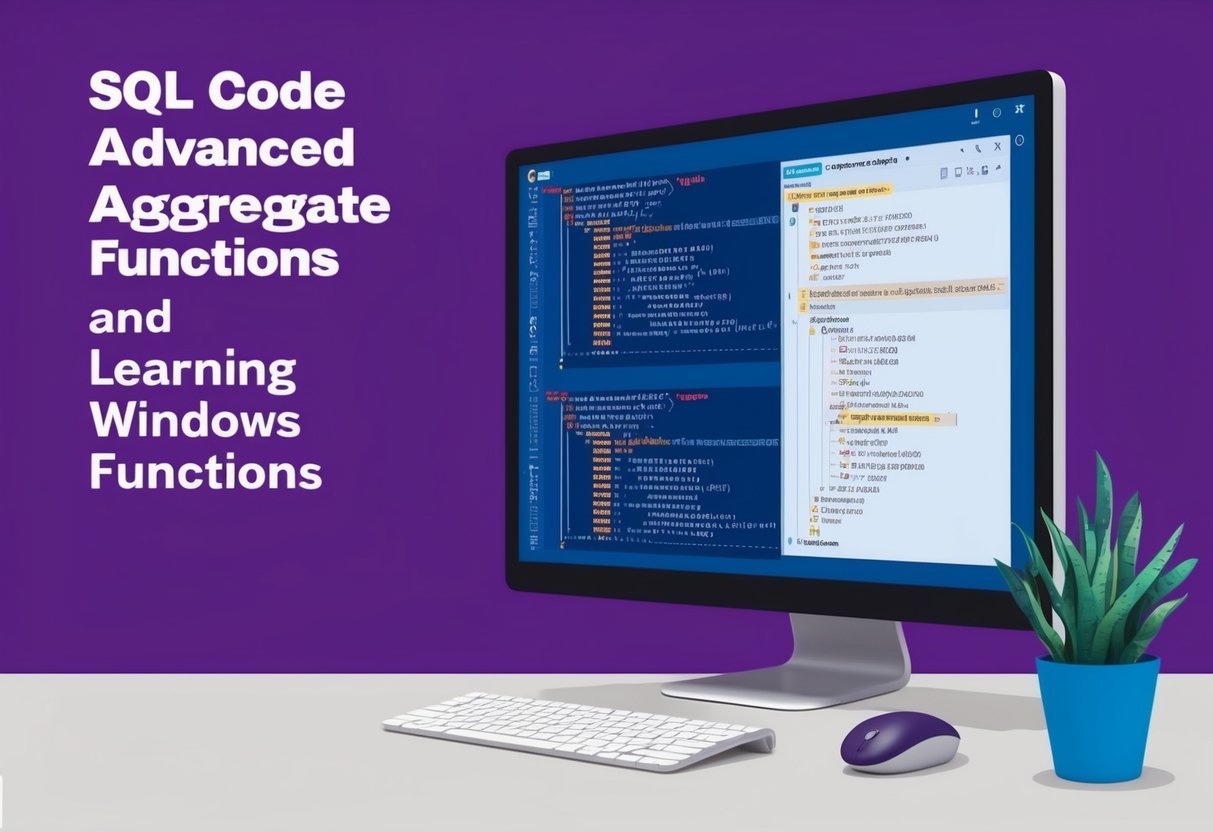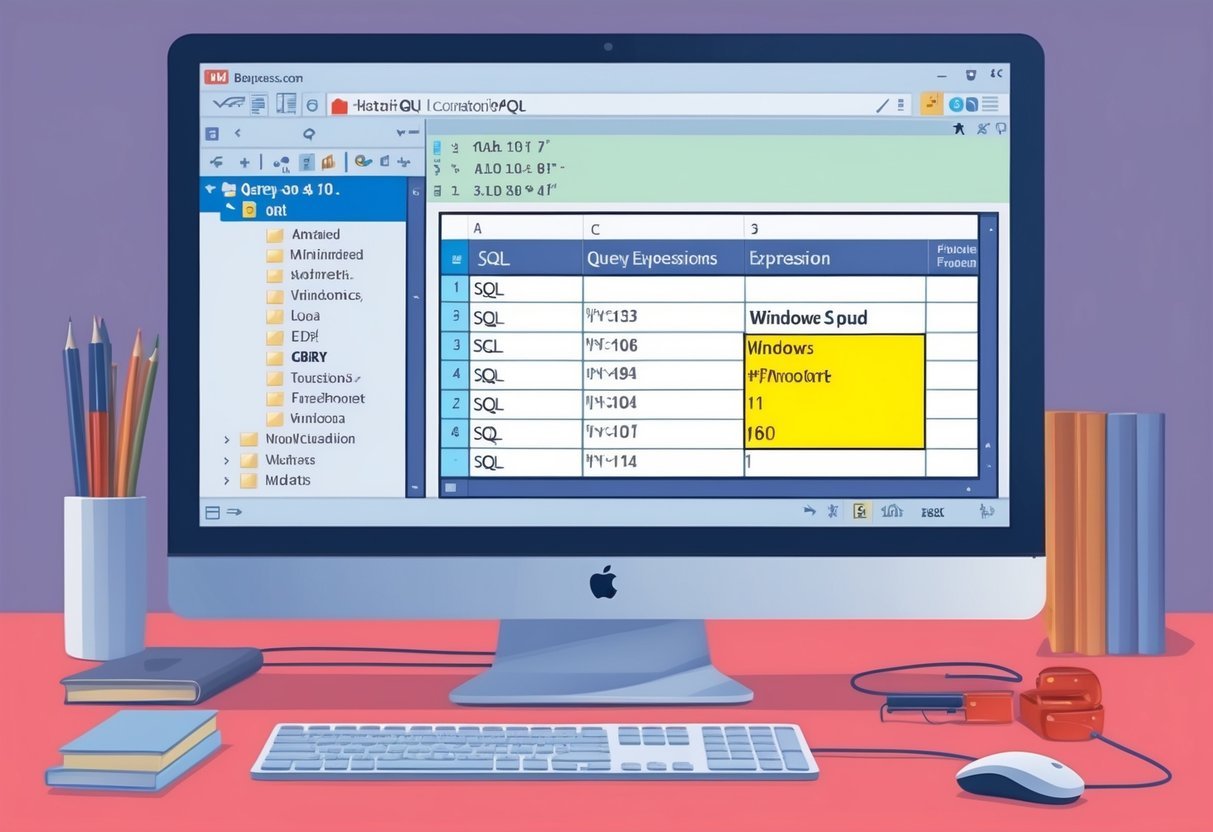Understanding Pandas in Data Science
Pandas is a powerful tool in data science. It helps data scientists analyze and explore data efficiently. Built on the Python programming language, it is used for data manipulation and offers flexible options for reshaping and organizing data.
Key Features of Pandas:
-
DataFrames and Series: These are the core structures used for organizing data. A DataFrame is like a table, while a Series is a single column or row in that table.
-
Data Manipulation: Pandas allows users to filter, group, and sort data easily. This is crucial for cleaning and preparing data for analysis.
-
Integration with Other Libraries: Pandas works well with other Python libraries such as NumPy for numerical data, and Matplotlib for creating visualizations. This makes it useful across different phases of data analysis.
In data exploration, Pandas is invaluable. Data scientists can quickly load datasets, inspect data types, and identify missing values. This initial inspection is often the first step in machine learning projects.
Real-World Applications:
-
Finance: Analysts use Pandas for stock data analysis and financial modeling. It handles large datasets efficiently, which is essential in financial data processing.
-
Healthcare: Data stored in spreadsheets or databases can be manipulated with Pandas for better insights into patient records and clinical trials.
These capabilities make Pandas a versatile and essential tool for anyone working in data science. For more insights, check out Learning Pandas or Hands-On Data Analysis with Pandas for in-depth guides on using Pandas in data science.
Getting Started with Dataframes
Dataframes are central to data handling in Python, especially when working with the pandas library. They allow for efficient data storage and manipulation.
Creating Dataframes from Scratch
Creating a dataframe from scratch involves using Python dictionaries or lists. Dicts provide an easy way by mapping column names to their data lists.
For example, a simple dataframe for student scores can be created with:
import pandas as pd
data = {'Name': ['Alice', 'Bob', 'Charlie'],
'Score': [85, 90, 78]}
df = pd.DataFrame(data)
This code snippet sets up a dataframe with two columns: “Name” and “Score.” Each column contains data lists corresponding to their labels. Lists of lists can also be used, where each sublist represents a row.
data = [['Alice', 85], ['Bob', 90], ['Charlie', 78]]
df = pd.DataFrame(data, columns=['Name', 'Score'])
Dataframes created this way are useful for quick experiments and testing. The flexibility of using lists or dictionaries makes this approach adaptable to different data needs.
Reading Data from CSV Files
Reading data from CSV files into a dataframe is simple with the read_csv function in pandas. This function reads data stored in a common spreadsheet format and imports it directly into a dataframe structure.
df = pd.read_csv('students.csv')
This command reads a file named “students.csv” and automatically uses the first row as column headers. Users can specify additional parameters, for instance, using the sep parameter to define a custom delimiter.
Key options such as names and index_col allow further customization. names sets column labels if headers are missing, while index_col changes which column is used as the row index. Handling CSV files with read_csv is essential for integrating external datasets into data analysis tasks. It’s a fundamental skill for data scientists working with structured data regularly.
Series and Dataframe Structures
Pandas offers powerful tools for data manipulation with its Series and DataFrame structures. These core components allow data scientists to efficiently handle data and perform complex operations.
Understanding Series Objects
A Series in pandas is a one-dimensional array capable of holding various data types. It’s similar to a column in a spreadsheet or a list in Python. Each item in a Series has a unique label called an index, which is used to access data quickly.
One of the key features of a Series is its flexibility. It can hold integers, floats, and even strings. This makes it an excellent choice for tasks like data alignment through automatic label-based alignment.
When performing operations between Series, pandas aligns them based on the index labels. Series is often an essential part of initial data manipulation, allowing users to filter, aggregate, or slice data efficiently.
Understanding how to work with Series is crucial when analyzing data because it lays the foundation for more complex data structures.
Differences Between Series and Dataframes
While a Series is one-dimensional, a DataFrame is two-dimensional, much like a table in a database. This structure allows data to be stored in rows and columns, making it ideal for handling large datasets.
Each column in a DataFrame can be thought of as a Series, which provides the flexibility to work with heterogeneous data types in different columns.
A DataFrame is particularly useful when different types of data need to be combined into a single structure. Operations like slicing, filtering, and grouping become more intuitive and powerful within a DataFrame due to its layout.
DataFrames provide a more comprehensive framework for data manipulation tasks, enabling users to transform and analyze data with ease. The choice between Series and DataFrame depends on the complexity and nature of the data being handled.
Indexing and Selecting Data
Indexing and selecting data in pandas are essential skills for efficiently handling and analyzing datasets. Understanding how to use basic indexing and more advanced methods like .loc and .iloc is crucial for precise data manipulation and retrieval.
Basic Indexing Techniques
Basic indexing in pandas allows users to access data using simple labels. When working with a DataFrame or a Series, this can be done by calling the column name directly or using numeric indices.
For example, using data['column_name'] selects a specific column, while data[0:10] selects the first ten rows.
Single-label access is straightforward but powerful. By passing a column name inside brackets, users can quickly select columns. This technique also extends to rows, where slicing operations such as data[:5] can limit the view to the first five entries. Basic indexing serves as the foundation for more complex operations.
By mastering these techniques, one can effectively start dissecting datasets into manageable parts without the need for more involved methods.
Advanced Indexing with loc and iloc
For more precise data selection, pandas offers .loc and .iloc. The .loc method is label-based, enabling access to data by specifying row and column labels.
It is particularly useful when the dataset has a string-based index. For example, data.loc['row_label', 'col_label'] selects specific rows and columns.
In contrast, .iloc is integer-based and uses numeric indices for selection. This method is handy when direct label access is not feasible or when numeric slicing is preferred.
Using data.iloc[0, 1] would select the first row’s second column. Both .loc and .iloc support sophisticated slicing, allowing for selection by conditions or ranges. This flexibility enables the extraction and manipulation of data with precision, tailoring outputs to specific analysis needs.
Efficient Data Slicing in Pandas
Pandas offer powerful ways to slice and extract data from large datasets. Methods such as label-based slicing and position-based slicing make it easy to work with specific data parts. Understanding how to efficiently use these techniques can greatly enhance data manipulation tasks.
Slicing Dataframes Using Labels
Slicing dataframes using labels relies on index labels to extract desired data. This method is efficient for accessing subsets of data through Pandas’ .loc[] attribute.
It allows users to select rows and columns by specifying label names, which makes it intuitive for labeled data.
For example, using df.loc['row_label', 'column_label'] can extract a specific value. To select a range of rows, one might use df.loc['start_label':'end_label']. This slicing includes both the start and end labels, making it easy to grab specific portions of the data. Label-based slicing is particularly beneficial when dealing with non-numeric indices or date ranges.
Position-based Data Slicing
Position-based slicing utilizes integer-location based indexing to access data, employing the .iloc[] function.
This method selects data by the numerical position of rows and columns, similar to list indexing in Python.
With df.iloc[0:5, 1:3], users can slice a dataframe to select rows zero through four and columns one and two. Unlike label-based slicing, the end index is exclusive.
Position-based slicing is valuable when dealing with numerical datasets or when users need precise control over row and column positions. This method provides straightforward and precise access to data when indices are unknown or irrelevant.
Boolean Indexing for Data Selection
Boolean indexing is a powerful way to filter and select specific rows in a DataFrame. It allows users to apply conditions and combine them for precise data manipulation. This method helps with targeted data analysis and is essential for those working with large datasets.
Filtering Data with Conditions
Filtering with conditions involves using booleans to choose rows that meet specific criteria. In Pandas, users can apply conditional statements directly to DataFrame columns to produce boolean Series. These Series can then be used to select rows that match the criteria.
For example, consider a DataFrame df with a column age. To select rows where age is greater than 30:
df[df['age'] > 30]
This returns a DataFrame with only the rows where the condition is true. Users can filter by different conditions, such as equality or inequality, using operators like ==, !=, <, >, <=, and >=.
Boolean indexing is not just limited to numbers. Strings and other data types can also be filtered using similar methods. This flexibility makes it a versatile tool in data analysis.
Combining Multiple Conditions
Combining conditions allows for more complex data selections. Users might want to filter rows based on multiple criteria. For this, logical operators like & (and), | (or), and ~ (not) are used.
For instance, if there’s a need to select rows where age is greater than 30 and salary is less than 50000:
df[(df['age'] > 30) & (df['salary'] < 50000)]
The parentheses are important to ensure proper evaluation order.
To select rows where either condition is true, use the | operator:
df[(df['age'] > 30) | (df['salary'] < 50000)]
For negating a condition, use ~. This method takes full advantage of boolean logic for precise data selection, allowing analysts to refine their datasets effectively.
Manipulating Data with Pandas
Manipulating data with Pandas involves efficiently altering DataFrames to refine and prepare data for analysis. This can include adding or removing columns, handling missing values, and updating or deleting rows.
Pandas, often alongside NumPy, allows users to perform these tasks with ease and precision, ensuring a streamlined data preparation process.
Adding and Removing Columns
Pandas makes it simple to add or remove columns in a DataFrame.
Users can insert a new column by assigning a list or a NumPy array directly to a DataFrame. For instance, dataframe['new_column'] = [data] adds a new column.
Removing columns is equally straightforward. The drop() method is used to delete columns.
Specifying axis=1 indicates a column, such as dataframe.drop('column_name', axis=1, inplace=True). The inplace=True parameter ensures the change directly modifies the original DataFrame.
Sometimes, columns need adjustment due to missing values. By filling missing values with methods like fillna() or dropna(), users can refine their data depending on analysis needs. This approach assures that cleaned data doesn’t affect subsequent computational steps.
Updating and Deleting Rows
Updating rows in a DataFrame is vital for accurate data representation.
Pandas allows for row updates with conditional indexing. Using boolean arrays or conditions, users can update specific rows. For example, dataframe.loc[dataframe['column'] > value, 'column'] = new_value changes rows meeting conditions.
Deleting rows often involves handling missing data. The dropna() method effectively removes rows with null values, preserving data integrity.
Alternatively, the drop() method deletes specific rows by index. For example, dataframe.drop(index) removes a row at the given index location.
These operations are essential for maintaining a clean and accurate DataFrame, allowing focused and effective data analysis without unnecessary clutter.
Working with Missing Values
Managing missing values is crucial when dealing with data in Pandas. It ensures the accuracy of the analysis and provides clean datasets. Below, we explore ways to detect and handle missing values in a DataFrame effectively.
Detecting Missing Values
In Pandas, missing values are typically represented as NaN in a DataFrame. Identifying these gaps is the first step in ensuring data cleanliness.
The method isnull() returns a DataFrame of the same shape, with True for missing entries. Meanwhile, notnull() does the opposite, revealing non-missing values.
Using sum() in combination with isnull(), one can count missing values in the dataset. This approach is helpful for understanding the extent of missing data.
A quick summary can be obtained using the info() method, which shows the number of non-null entries per column.
Handling Missing Values
After detection, handling missing values is crucial to maintain data integrity.
One common method is using fillna(), which replaces missing entries with a specified value, such as the mean or median of the column. An alternative is dropna(), which removes rows or columns with missing values.
Choosing between filling or dropping depends on the dataset. For example, if a column has a high number of missing values, dropping might be necessary. Meanwhile, filling helps when missing values are few and do not significantly skew the data.
It’s essential to decide based on the data’s context and the analysis goals.
Merging and Concatenating Dataframes
Merging and concatenating dataframes is essential for manipulating and managing data efficiently in pandas. These processes allow developers to combine datasets either by columns or rows, making it possible to analyze large sets of data conveniently.
Combining Data by Columns
By merging dataframes, different datasets with shared keys or columns can be combined.
The pandas library offers a merge function that operates similarly to SQL joins, such as inner, outer, left, and right joins. This function is flexible and allows detailed control over how data is combined by specifying the column names to join on.
import pandas as pd
df1 = pd.DataFrame({'Key': ['A', 'B', 'C'], 'Value1': [1, 2, 3]})
df2 = pd.DataFrame({'Key': ['A', 'B', 'D'], 'Value2': [4, 5, 6]})
result = pd.merge(df1, df2, on='Key', how='inner')
In this example, the merge operation joins dataframes on the ‘Key’ column, including only the matching rows (‘inner’ join). Merge operations are essential for combining data originating from different datasets or systems.
Appending Data by Rows
Concatenating, or appending, dataframes adds new rows to an existing dataframe. This is beneficial when datasets need to be extended with additional observations.
Pandas provides the concat function, which can stack dataframes vertically.
df1 = pd.DataFrame({'A': [1, 2], 'B': [3, 4]})
df2 = pd.DataFrame({'A': [5, 6], 'B': [7, 8]})
result = pd.concat([df1, df2], ignore_index=True)
The ignore_index=True parameter reindexes the new combined dataframe, which is useful when the original indices do not need to be retained. Concatenation is often used when dealing with timeseries data or combining monthly data into an annual dataset. Using libraries like numpy can help optimize such operations.
Grouping and Aggregating Data
When working with data in Python, the ability to group data is crucial. Using pandas, users can group data in a DataFrame by various columns. This allows them to perform operations on each group.
For example, using groupby() enables the segmentation of data. Suppose a DataFrame contains sales data with columns like ‘Region’ and ‘Sales’. By grouping by ‘Region’, one can easily calculate the total sales for each region.
Aggregating functions like sum(), mean(), and count() are often applied on groups. These help in summarizing the data, such as finding the average sales per region or the total number of sales transactions.
The agg() method is versatile and allows for multiple aggregation operations.
Integration with NumPy further enhances these capabilities. Leveraging NumPy’s functions, like np.mean() or np.median(), can provide more flexibility during data analysis.
Grouping also works well with more advanced data manipulation techniques. Users can filter groups based on conditions or transform them.
This could involve applying custom functions to group data and obtaining specific insights that basic aggregations might not reveal.
In practice, combining group-by operations with data manipulation allows for detailed and powerful data analysis workflows. This is particularly useful in large datasets that require scalable solutions. Whether it’s financial data analysis or performance metrics, pandas’ grouping and aggregation features remain essential tools.
Time Series Analysis with Pandas
Time series analysis helps in understanding data points collected over time. Pandas is a powerful library in Python that simplifies time series handling. It supports operations like slicing, filtering, and grouping, which makes data manipulation and analysis straightforward.
One of the useful features is the DataFrame structure. It allows users to organize data efficiently.
Time-indexed DataFrames enable users to perform time-based operations with ease. To create a time-indexed DataFrame, a datetime index is used.
Pandas provides functions like resample() to change the frequency of time series data. This is useful for summarizing data into different periods.
Rolling windows can also be applied for calculations like moving averages.
For visualization, Pandas integrates well with libraries like Matplotlib. Plotting time series data can reveal patterns and trends. This makes it a vital tool in data science to communicate findings effectively.
Dealing with time zones is another important aspect. Pandas supports time zone conversions which ensures consistency in data analysis when dealing with global datasets. This feature is essential in ensuring data accuracy and reliability.
Finally, combining time series data with other datasets is often necessary.
Pandas allows for merging different data sources, which enriches the analysis by providing more context. This is especially useful for comprehensive insights in data science projects.
Data Visualization with Pandas
Pandas is a powerful tool for data analysis in Python, especially when paired with data visualization libraries. It allows users to explore and understand data by creating clear visual representations.
DataFrame Plotting
Using the .plot() method, users can create various chart types, including line graphs, bar charts, and histograms. This makes it easier to spot trends and patterns in the data.
import pandas as pd
df = pd.DataFrame({'A': [1, 2, 3], 'B': [4, 5, 6]})
df.plot(kind='line')
Combining with Other Libraries
Pandas works well with other data exploration tools like Matplotlib and Seaborn. By combining these libraries, users can create more detailed and aesthetically pleasing plots.
- Matplotlib: Provides extensive customization for plots.
- Seaborn: Offers beautiful statistical graphics that work seamlessly with Pandas.
Data Exploration with Visualization
Visual tools are essential in data science for identifying relationships and anomalies. By visualizing data, users can make informed decisions, gaining deeper insights into their DataFrame structures.
Interactive Plots
For those interested in interactive graphics, Pandas also integrates with libraries like Plotly. This provides dynamic visualizations where users can zoom in, hover over data points, and interact with graphs, enhancing the data analysis experience.
Visualizing data with Pandas not only aids in understanding large datasets but also enhances the overall data analysis process, making it a vital component in any data scientist’s toolkit.
Frequently Asked Questions
Slicing data in Pandas is essential for analyzing subsets of data from a DataFrame. This involves techniques like selecting specific columns or rows based on conditions and using built-in functions.
How do I slice a DataFrame by specific column values in Pandas?
To slice a DataFrame based on specific column values, use the loc function. Specify the column and value to filter rows. For example, df.loc[df['column_name'] == value] selects rows where the column matches the value.
What is the syntax to slice a Pandas DataFrame by column?
To slice by column, bracket notation can be used. For example, df[['column1', 'column2']] selects specific columns. Another method is using the loc accessor like df.loc[:, ['column1', 'column2']].
Can I slice a DataFrame based on a condition, and how is that approached in Pandas?
Slicing based on conditions is done using Boolean indexing. For instance, df[df['column'] > 50] selects rows where the column’s values are greater than 50. Multiple conditions can be combined with logical operators.
In Pandas, how do you select rows based on their row number?
To select rows by their row number, use the iloc function. For example, df.iloc[0:5] selects the first five rows. This method is index-based and does not consider the actual data content.
How does the ‘iloc’ function work for slicing data in Pandas?
iloc is used for slicing data by position. It accepts integer index positions. For example, you can use df.iloc[1, 2] for a specific cell or df.iloc[1:4, 2:5] for ranges of rows and columns.
What is the best practice to perform slicing operations on a dataset using Pandas?
When slicing, clear criteria should be defined for filtering and selecting. Using loc and iloc ensures efficient and readable code. Combining these methods with conditions helps in extracting meaningful data subsets.










































